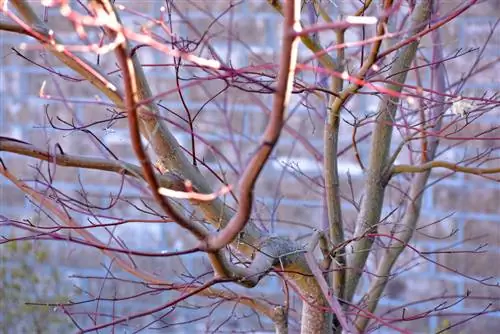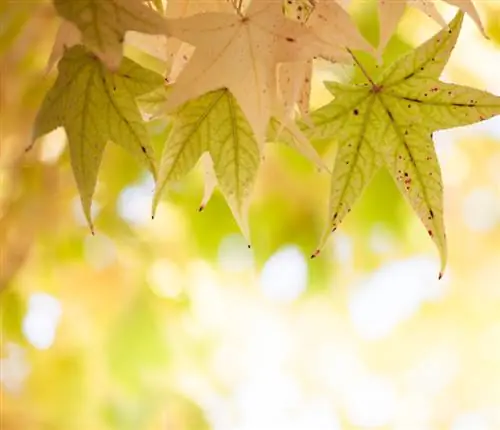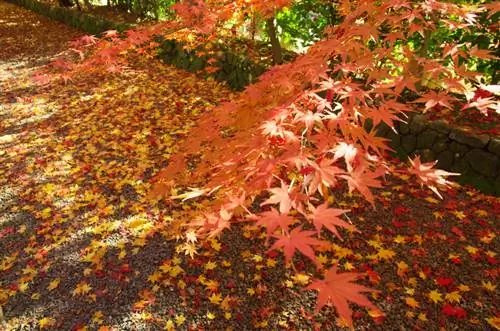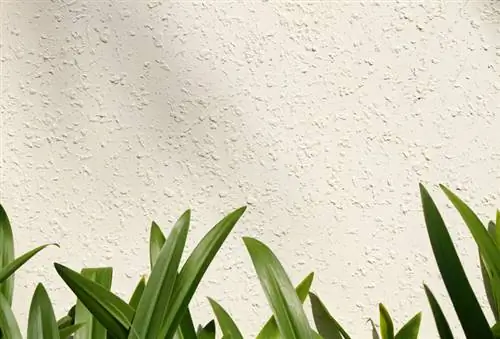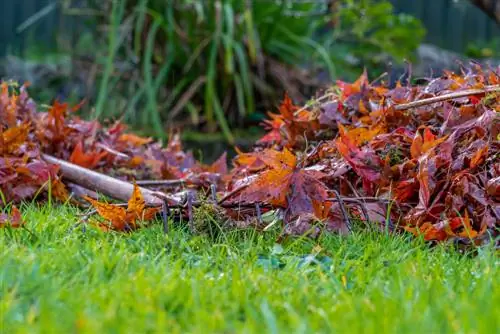- Author admin [email protected].
- Public 2023-12-16 16:46.
- Last modified 2025-01-23 11:22.
Like all deciduous trees, the Japanese maple also loses its leaves in autumn. But what could be the reason if the loss of the plant's foliage begins beforehand? We explain why it can happen that a Japanese maple has no leaves.
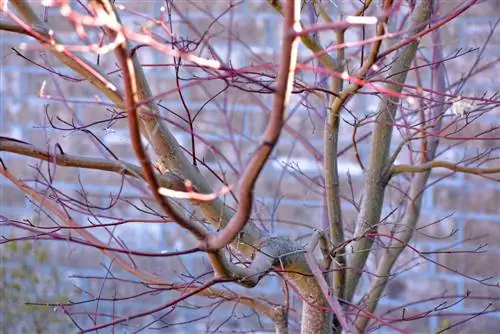
Why does a Japanese maple have no leaves?
A Japanese maple loses leaves prematurely due to disease, pest infestation, improper watering, drought, waterlogging or weather conditions. Correct location, loose soil and appropriate care are crucial for he althy foliage.
Why does a Japanese maple have no leaves?
The most common reasons why a Japanese maple, whether as a planted tree in the garden, in a container or as a bonsai, has no leaves, are the following:
- Diseases: many diseases are associated with leaf loss; Verticillium wilt, a fungal disease, is particularly feared in the Japanese maple
- Pest infestation: if the tree is heavily infested with aphids or spider mites, this can also cause leaf loss
Can incorrect care be the cause of missing leaves?
Above all, theincorrect supply of water can be a reason why the Japanese maple loses its leaves long before autumn. This can involve different types of damage:
- Droughtness: can be recognized primarily by the fact that the tips of the leaves turn brownish and the branches appear dead
- Waterlogging: too much moisture damages the sensitive trees and can cause the same damage as too little water
Can weather conditions be to blame for the leaf loss?
Draughts, wind and excessive heatcan be to blame for the loss of leaves on a Japanese maple. Choosing the right location is very important for the plants. Most species tolerate a sunny spot, but should not be exposed to too much sun.
Is the potting soil a possible trigger for leaf loss?
This is possible because the well-being of a Japanese maple depends largely on the right soil. The soil must besufficiently loose so that the roots can absorb enough water and nutrients and pass them on to the tips of the leaves. If the soil is too firm, young specimens and potted plants in particular should be transplanted. For older trees that often resent being transplanted, loosening the soil is a good measure.
Can the Japanese maple still be saved if it no longer has any leaves?
The Japanese maple can often be savedwhen it no longer has any leaves. The problem should always be resolved as quickly as possible. The following applies:
- Pest control
- To avoid drought
- Avoid waterlogging
- choosing the right location
- to ensure loose soil
An exception is infestation with wilt disease. Unfortunately, the Japanese maple affected by this can only be saved in a few cases - it often dies despite rapid transplanting and cutting back.
Tip
Choose the right size plant container
If Japanese maple is cultivated in a pot on a balcony or terrace, it is important to make sure that the pot is sufficiently large - it is better to use a little too big than too small. In planters that are too small, the roots cannot develop properly and as a result cannot supply the branches and leaves with sufficient water and nutrients.

